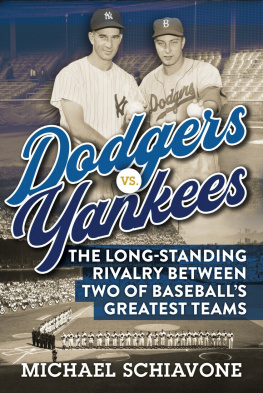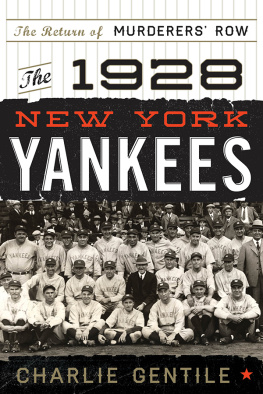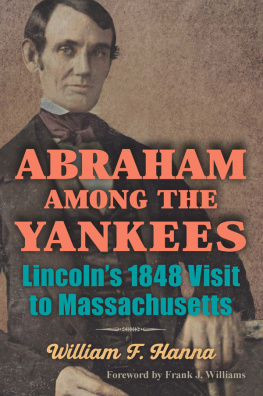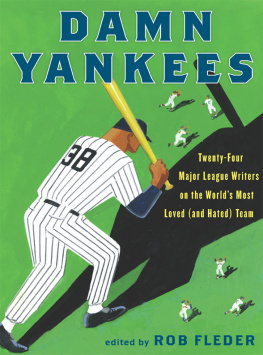
This edition is published by PICKLE PARTNERS PUBLISHINGwww.picklepartnerspublishing.com
To join our mailing list for new titles or for issues with our books picklepublishing@gmail.com
Or on Facebook
Text originally published in 2002 under the same title.
Pickle Partners Publishing 2014, all rights reserved. No part of this publication may be reproduced, stored in a retrieval system or transmitted by any means, electrical, mechanical or otherwise without the written permission of the copyright holder.
Publishers Note
Although in most cases we have retained the Authors original spelling and grammar to authentically reproduce the work of the Author and the original intent of such material, some additional notes and clarifications have been added for the modern readers benefit.
We have also made every effort to include all maps and illustrations of the original edition the limitations of formatting do not allow of including larger maps, we will upload as many of these maps as possible.
THE YANKEES ARE COMING! THE YANKEES ARE COMING!
A COMPARISON BETWEEN THE AMERICAN REVOLUTION AND VIETNAMS WAR FOR NATIONAL UNIFICATION
by
Major Jeffrey M. Dunn, United States Marine Corps
TABLE OF CONTENTS
Contents
TABLE OF CONTENTS
REQUEST FROM THE PUBLISHER
EXECUTIVE SUMMARY
Thesis : This paper compares British involvement in America's struggle for independence in the late eighteenth century with the United States' immersion in North Vietnam's struggle for national unification in the twentieth.
Discussion : Many similarities exist between the American Revolution and the Vietnam War. Five of the most apparent similarities are examined. First, Great Britain and the United States made similar fundamental assumptions, in their respective conflicts, which proved equally flawed. Second, the distances between the combatants in both conflicts were vast. The lines of communication were extremely long. Third, similarities abound between the people involved, both generally and specifically. Fourth, both wars have a single campaign that can be described as the turning point. Though Saratoga and Tet occurred at relatively early stages in the respective conflicts, the outcomes of the wars were arguably decided after those campaigns. Fifth, the southern strategies in both wars are remarkably analogous. Both Great Britain and the United States succeeded in alienating the undecided, and arousing animosity among the common people.
Conclusion:
- The United States became the oppressor in Vietnam, and closely emulated its enemy, Great Britain, in the Revolutionary War.
- Many patterns repeat themselves through history and within those patterns are keys to success in the future.
- The United States needs to become more proficient at searching for patterns in history (not just its own). By learning from the mistakes made by itself and others, the U.S. will make fewer mistakes in the future.
CHAPTER ONE INTRODUCTION
This paper will compare British involvement in America's struggle for independence in the late eighteenth century with the United States' immersion in North Vietnam's struggle for national unification in the twentieth. The patterns found in these two conflicts, that occurred centuries apart, mirror each other in many ways.
The similarities between the two wars are numerous, but this work will focus on the five most obvious. First, Great Britain and the United States made similar fundamental assumptions, in their respective conflicts, which proved equally flawed. Second, the distances between the combatants in both conflicts were vast. The lines of communication were extremely long. Third, similarities abound between the people involved, both generally and specifically. Fourth, both wars have a single campaign that can be described as the turning point. Though Saratoga and Tet occurred at relatively early stages in the respective conflicts, the outcomes of the wars were arguably decided after those campaigns. Fifth, the southern strategies in both wars are remarkably analogous. Both Great Britain and the United States succeeded in alienating the undecided, and arousing animosity among the common people.
Finally, the question of "so what?" must be answered. Why do the similar patterns matter? The old clich that history repeats itself is hard to ignore. By conducting disciplined pattern analysis in the future, the United States can avoid repeating mistakes and improve its performance throughout the entire spectrum of foreign relations.
CHAPTER TWO FLAWED ASSUMPTIONS
Both Great Britain and the United States entered their respective conflicts under several similar assumptions that were vitally flawed. They both subscribed to a "Domino Theory" that hindered any kind of compromise or toleration of resistance. They assumed that the majority of the people of the revolutionary countries were loyal, and wanted assistance in restoring order. Both great powers assumed that technological superiority and experience would make the conflicts inexpensive, short, and easily won. Neither great power anticipated, fully understood, or prepared for an asymmetric fight.
The Domino Theory
Great Britain, an island Nation largely dependent on her colonies for all manner of material, was very concerned that a secession or unchecked rebellion on the part of the American Colonies would cause a chain reaction throughout the Empire. Richard M. Ketchum articulates this in Saratoga :
From the royal point of view, the great fear was that the rebellion in America would set off a reaction like the fall of a row of dominoes, with the West Indies becoming dependent on America and the Irish seeking independence, 'so that the island reduced to itself, would be a poor island indeed.' {1}
The British Monarchy also believed that successful rebellion would shake all of Europe to its foundation. In contrast to the United States' Domino Theory of the twentieth century, Great Britain's fears had validity, as the French would discover in the years to come.
Like England, the United States had its own Domino Theory. Though the actual term was not used publicly until 1954 in a speech by President Eisenhower, the theory began to take shape in 1950 in documents like NSC-64. Kissinger articulates this in Diplomacy :
NSC document 64 had concluded that Indochina was 'a key area of Southeast Asia and is under immediate threat.' The memorandum marked the debut of the so-called Domino Theory, which predicted that, if Indochina fell, Burma and Thailand would soon follow, and that 'the balance of Southeast Asia would then be in grave hazard.' {2}
NSC-68 outlined the "Fundamental Design of the Kremlin" as the U.S. leadership saw it. The Soviet Union's ultimate goal was absolute power over its territories. Within the minds of the Soviet leaders this meant everyone else had to be destroyed. {3} The leadership in the U.S. at the time believed that the Soviet Union and China were strong allies bent on world domination. One assumption was that if any country fell to communist rule, regardless of whether the impetus was internal or external, the rest of the region would fall like dominoes, and democracy would be extinguished. Although NSC-68 was initially subjected to strong criticisms, the invasion of South Korea in June of 1950 quieted all reservations and the "Domino Theory" became accepted as fact for the next twenty years. {4} This theory was the driving force behind U.S. involvement in Vietnam. According to Robert McNamara in his book, In Retrospect, the incoming Kennedy administration was briefed by the outgoing Eisenhower administration on 19 January, 1961. During this meeting, McNamara recalls:










